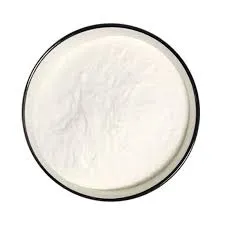
Nov . 10, 2024 21:50 Back to list
Exploring the Benefits of Cement Bonding Additives for Enhanced Construction Durability
Understanding Cement Bonding Additives Enhancing Strength and Durability
Cement bonding additives are essential components in the construction industry, enhancing the performance and durability of cement-based materials. As the demand for high-performance construction materials continues to rise, the importance of cement bonding additives cannot be overstated. This article explores the types, benefits, and applications of these additives, shedding light on their crucial role in modern construction.
What are Cement Bonding Additives?
Cement bonding additives are substances incorporated into cement or concrete mixtures to improve their properties. These additives can increase adhesion between cement and substrates, enhance strength, durability, and workability, and sometimes provide additional characteristics such as water resistance or reduced shrinkage. Common types of cement bonding additives include polymers, silica fume, fly ash, and various chemical admixtures.
1. Polymers Polymer-based additives, such as styrene-butadiene rubber (SBR) or polyvinyl acetate (PVA), are widely used to improve the flexibility and adhesion of cementitious materials. These additives create a film that enhances the bonding between the old and new layers of concrete, making them ideal for repair works and resurfacing applications.
2. Silica Fume A byproduct of silicon and ferrosilicon metal production, silica fume is an ultra-fine powder that significantly improves the mechanical properties of concrete. It enhances the bonding strength and reduces permeability, contributing to the overall durability of the structure, especially in harsh environments.
3. Fly Ash Another common additive, fly ash, is a byproduct of coal combustion in power plants. When used as a partial replacement for Portland cement, it not only reduces the heat of hydration but also enhances the long-term strength and bonding of concrete. Fly ash improves the workability of concrete mixtures, making them easier to pour and shape.
4. Chemical Admixtures These include various compounds like superplasticizers, accelerators, and retarders that can be added to cement mixtures to modify their properties. Superplasticizers, for instance, improve the flowability of concrete, allowing for better placement and finishing.
Benefits of Cement Bonding Additives
The incorporation of bonding additives into cement mixtures offers numerous benefits
- Enhanced Bond Strength Additives like polymers and silica fume significantly improve the adhesion between layers of concrete or between concrete and other substrates, reducing the likelihood of delamination.
cement bonding additive

- Improved Durability By reducing permeability and increasing resistance to chemical attacks, bonding additives contribute to the longevity of structures. This is particularly important in infrastructure exposed to harsh weather conditions or aggressive chemicals.
- Reduced Shrinkage and Cracking Certain additives help mitigate the shrinkage that can occur as concrete cures. This reduction in shrinkage leads to fewer cracks and defects, improving the aesthetic and functional quality of the concrete.
- Higher Workability Many bonding additives improve the flow and workability of cement mixtures, allowing for easier installation and application. This can lead to more efficient construction processes and better finishing results.
Applications of Cement Bonding Additives
Cement bonding additives are versatile and find applications across various construction domains
- Repair and Rehabilitation When repairing existing structures, the use of bonding additives ensures a strong bond between the old and new concrete, which is critical for the success of the repair.
- Flooring Systems In flooring applications, resin-based bonding additives are commonly used to enhance the adhesion of thick flooring systems and decorative overlays.
- Waterproofing Applications Some bonding additives provide water-resistant properties, making them suitable for waterproofing applications in basements, pools, and retaining walls.
- Masonry and Tile Setting In masonry and tile installations, bonding additives improve the adhesion of mortars and grouts, ensuring that tiles and bricks remain securely in place over time.
Conclusion
Cement bonding additives play a vital role in the construction industry's pursuit of stronger, more durable structures. With their ability to enhance bond strength, improve workability, and resist adverse conditions, these additives are indispensable in modern construction practices. As technology continues to evolve, further innovations in bonding additives promise to revolutionize the way we approach cement-based materials, ultimately leading to safer and more sustainable construction solutions. Emphasizing the value of these additives not only maximizes the performance of construction materials but also contributes to the longevity and resilience of built environments.
-
Versatile Hpmc Uses in Different Industries
NewsJun.19,2025
-
Redispersible Powder's Role in Enhancing Durability of Construction Products
NewsJun.19,2025
-
Hydroxyethyl Cellulose Applications Driving Green Industrial Processes
NewsJun.19,2025
-
Exploring Different Redispersible Polymer Powder
NewsJun.19,2025
-
Choosing the Right Mortar Bonding Agent
NewsJun.19,2025
-
Applications and Significance of China Hpmc in Modern Industries
NewsJun.19,2025







